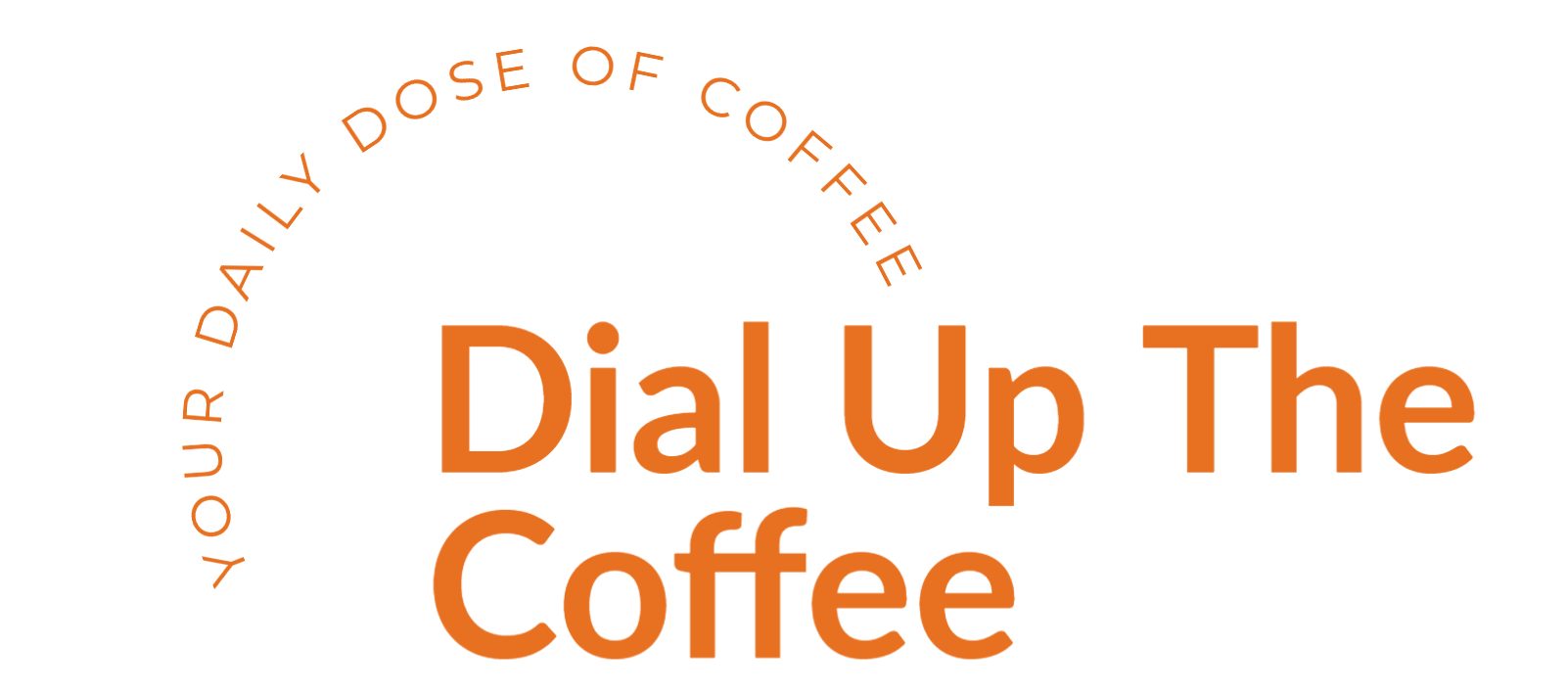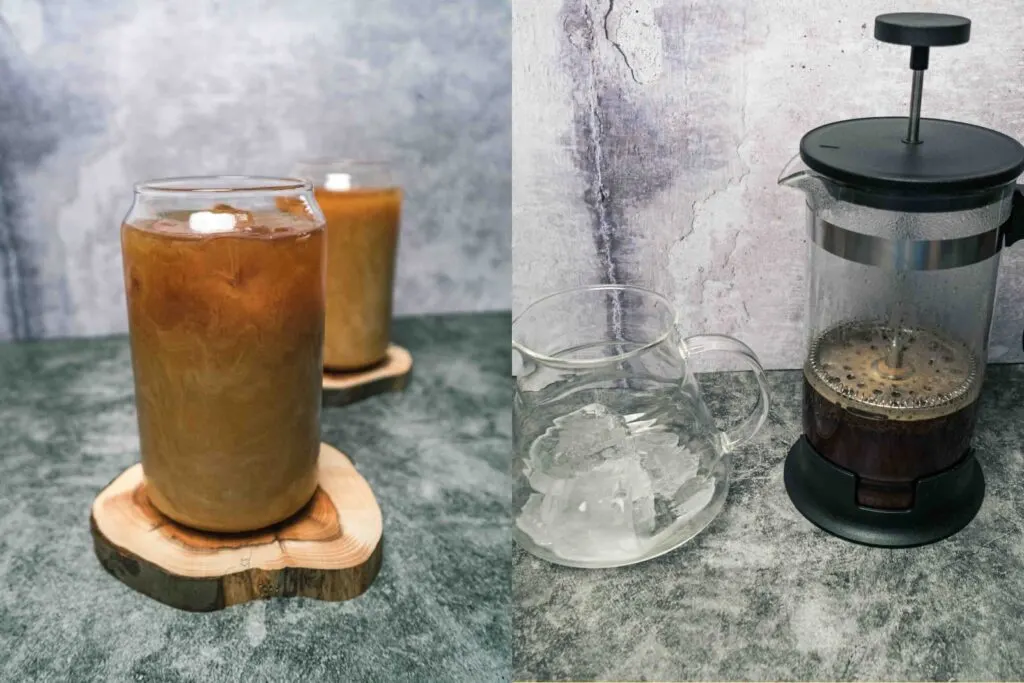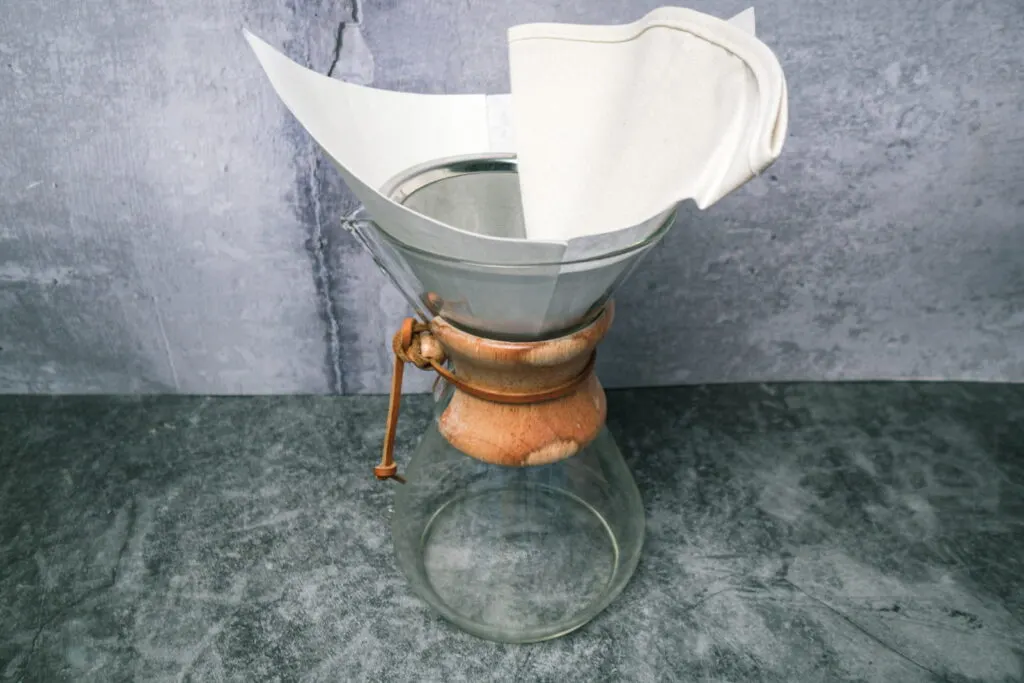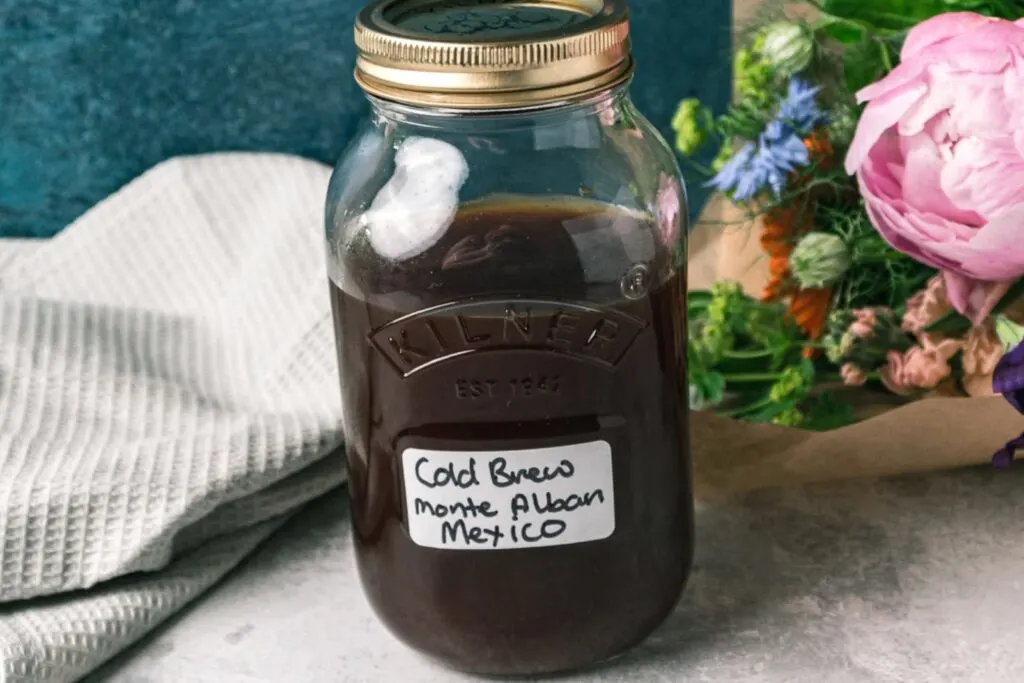If you are just getting into the broader world of coffee knowledge, learning that there are different types of coffee beans might be mind-blowing. The most exciting thing to learn after realizing this is that these two big names in coffee might not actually be arbitrary.
Though they may sort of look the same, Arabica and Robusta are two very different beans with many factors setting them apart from each other. If you want to tailor your coffee experience, or even just make sure that you’re getting the highest quality possible, it’s important to know the difference between these two types.
Differences Overview
- Taste
- Acidity
- Chlorogenic Acid
- Caffeine Content
- Cost
- Use
- Cultivation
- Growing Regions
- Resiliency
- Shape
- Lipids and Sugars
- Pollination
- Chromosomes
When picking out a coffee to make at home or choosing the right coffee shop to go to, knowing about Arabica and Robusta can definitely help clear up some questions that you might have.
Disclaimer: Hi! this post may contain affiliate links which will take you to online retailers that sell products and services. If you click on one and buy something, I may earn a commission, see my Affiliate Disclosure for more details.
It might even create new questions and curiosities! So, let’s look at a few of the interesting differences between these two types of coffee.
Taste
The taste behind a coffee is, undoubtedly the most critical factor. While you can easily add flavour to a cup via creamers and syrups, the taste of the brew will be the star.
When reading descriptions on different blends of coffee, very often descriptors like “fruity” “nutty” and “chocolatey” can be found. These are flavour notes that come from the coffee itself. There are a lot of different factors that contribute to the taste, most of which are covered in this list. Lipids, sugars, and acids are included, to name a few.
Most commonly, coffees fall under the guise of either sweet or bitter. These two flavour profiles are firm and are actually the defining qualities for both of the coffees that we are going over in this article. So, which is which?
Arabica

Arabica beans are the most popular beans in the world for a reason: they make a delicious coffee. 100% Arabica coffees have a light, sweet taste. They are rarely ever bitter, due to their acidity and sugar content.
When drinking a coffee made from these beans, the notes can differ. Depending on the blend, some drinks can favor either berry or chocolate flavour families. Some Arabica coffees can even taste a bit like caramel. The differences in these notes are why some coffees just work well with some added flavours.
Robusta
Robusta beans are the less produced bean in this instance, only making up about 25% of all coffee production.
Robusta beans are not incredibly popular due to their bitterness and unpleasant taste. Many people describe their taste as rubbery, gritty, and burnt. This lack of flavour may partially be due to their lack of fats, sugars, and acidity—the things that make Arabica taste so pleasant.
This “rubbery” taste isn’t something that everyone hates, however. There are actually people who really enjoy the taste of Robusta bean coffee, especially when it is made into espresso. Though, these people are obviously not in the majority.
Acidity
The amount of acid that is in a coffee can either enhance the experience or ruin it. Acidity is usually a positive factor in a coffee but can sometimes be very uncomfortable digest.
Acid is sensed on the front of the tongue and a coffee with enough acid can produce a tingling sensation.
Acid is a big part of the final aftertaste of a coffee (also known as its “finish”), giving high-quality coffees a sweet and juicy last sip.
Arabica
Between these two beans, Arabica is definitely the most acidic. This acidity isn’t necessarily a bad thing, though.
While the acid in Arabica coffee can negatively affect someone with acid reflux, it is a boost in flavour for those without.
In Arabica blends with high acidity, bright and fruity notes can be found. It can add a tingle to the tongue and really excite those taste buds.
Acidity can even give your coffee a similar feeling to wine, especially with the berry notes that regularly pop up in Arabica blends.
Robusta
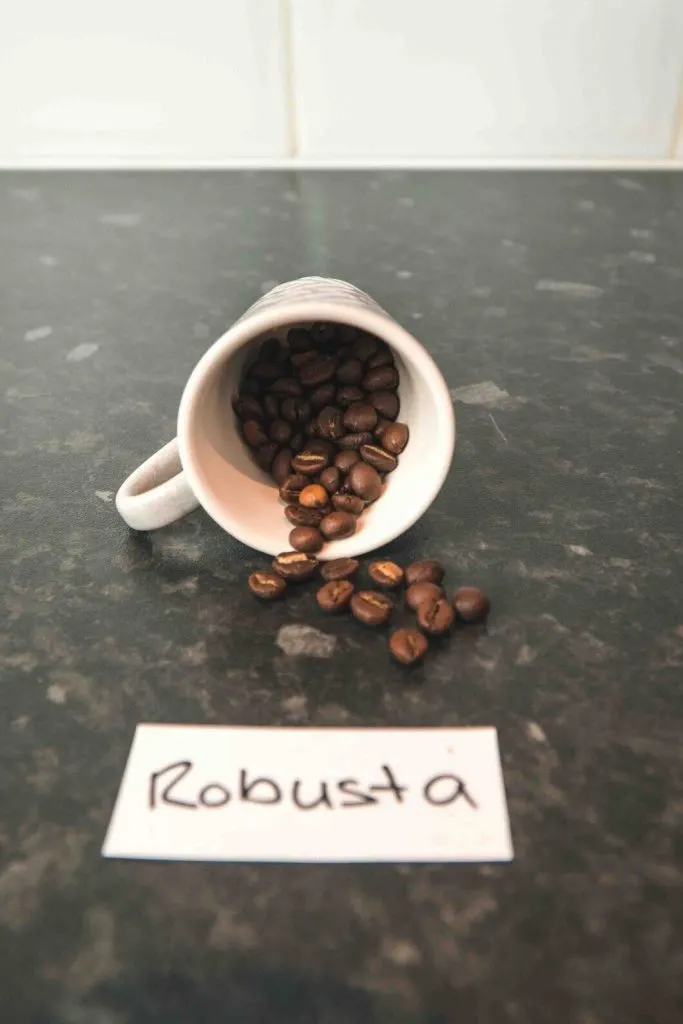
Robusta beans do not have as much acidity as Arabica beans. They lack citric and phosphoric acid, which is why they don’t have as strong of a sweet flavour as their counterpart.
The lack of acid in Robust beans may be a good thing, however, if you suffer from acid reflux. Many people who have this problem can’t drink Arabica coffee due to its high acidity.
Robusta coffee can give you the energy that you want from coffee without the resulting heartburn.
Chlorogenic Acid
Chlorogenic acids (CGAs) are part of the acidity in coffee beans, though they do not usually contribute a sweet flavour to the coffee itself.
CGAs are usually found in darker roast coffees and can produce a bitter taste. They also contribute to a strong aroma in coffees, which explains why dark roast coffees usually have a stronger scent than light roasts.
There are a few reasons why CGA is being looked at separately from the other acids. First of all, unlike most other acids, CGAs are not resistant to heat, so during the roasting process, they are degraded. This is why they do not affect the flavour of the coffee too harshly.
CGAs are also important in the sense that they are usually contained in quantities separate from overall acid content. This may be a confusing concept to understand, but the differences between the two beans in this regard might help clear it up.
Arabica
Arabica beans have a moderate amount of CGA, at around 6% of their make-up. Their lack of CGA significantly contributes to their vulnerability to insects in the wild, as CGA is a natural repellant.
Robusta
Robusta beans actually have a pretty high amount of CGA. This assists in their robust-ness by being a major deterrent of insects while growing. CGA deters insects because of its bitterness, which is part of the reason why this bean is so bitter.
Caffeine Content
Caffeine is a chemical stimulant to our central nervous systems, used to subdue drowsiness. We all know that the more caffeine found in a coffee, the more “energy” that we will have.
We also know that there is usually a subsequent crash. This is because your brain does not naturally produce caffeine, so it isn’t going to be able to make up that energy-boosting feeling on its own.
Caffeine is widely known as the most regularly consumed psychoactive drug on the planet, with little regulation. While caffeine can be found in many places, it is primarily consumed through coffee.
Coffee beans have a naturally high amount of caffeine, though some beans have more caffeine than others. A higher amount of caffeine usually means a more bitter taste, due to its own bitterness as a substance.
Arabica
Arabica might be tasty, but it is definitely not the most energy-boosting. Per 6-ounce cup, Arabica coffee only contains around 100 milligrams of caffeine.
To really get that wake-up feeling, though, it’s recommended that 200 milligrams of caffeine be consumed. That 200-milligram serving is recommended to be consumer per hour. So, if you’re trying to get ahead of the day, one cup of Arabica is not going to cut it.
Robusta
These beans are very high in caffeine. A cup of Robusta coffee has almost twice the amount of caffeine as one of Arabica.
This explains why Robusta coffee is used in gourmet brands like Death Wish Coffee—a coffee that is made to taste good but, more importantly, keeps you awake.
Robusta coffee has around 200 milligrams of caffeine per 6-ounce cup, where is exactly on par with the amount you need to stay awake. If energy is more important than taste, Robusta is definitely the right choice.
Cost
The
cost of coffee is due to a few different factors. The biggest factor is
definitely popularity. The greater the popularity of a particular bean, the
more that it is going to cost.
Cost is also affected by needed growing conditions, which we will look at more
in-depth a little bit later. This also affects where the coffee plants can be
grown, which is another factor in the price of each bean.
In the case of coffee, the cost usually does mean quality. This is especially true when looking at specialty coffees, where the beans are very highly coveted.
When it comes to affordability, there’s a clear winner between these two beans. You can decide whether affordability is a positive or negative trait in this case.
Arabica
When it comes to cost, Arabica is definitely the more expensive bean to drink. Arabica beans are used much more often, making them have a very high demand.
On top of that, they have more specific growing conditions than Robusta beans, making them a difficult and expensive bean to produce. For those reasons, Arabica beans are the more expensive bean here, which might partially be the reason for that $7 coffee.
Robusta
Robusta beans are notably very cheap. A pound of these beans is roughly a third of the cost of a pound of Arabica beans. There are a few reasons for this.
First of all, these beans are obviously not incredibly popular. Due to their overall unpleasant taste (especially in comparison to Arabica beans), they just aren’t going to sell as much.
Robusta beans are also very easy to maintain. They are not as difficult to produce as Arabica beans, so they aren’t going to cost as much in that regard either.
We will talk a bit more about the cultivation of each bean as we go on.
Use
Coffee beans are used in dozens of ways. While there are a seemingly infinite number of different ways to prepare coffee, there are even more ways to use the beans outside of just the drink.
Coffee beans are used in different recipes. People eat whole beans dipped in chocolate as snacks. There are even ground coffee face and body scrubs that you could probably find in the beauty section of your local department store.
However, when it comes to these two kinds of beans, we’re just going to be looking at the drinks that are primarily made with them.
Arabica
As you probably know, there are many different kinds of coffee drinks available. When it comes to these drinks, Arabica reigns supreme. Arabica coffee has been, and continues to be, the most popular coffee bean to drink in America since the 1960s.
After that coffee craze truly began, the popularity of the bean began to spread as economies around the world. Now, Arabica beans take up the majority of all coffee products, including every drink that you would get at your local coffee shop.
Robusta
Robusta beans were previously the bean used in affordable coffee blends, but that has changed. In the last few decades, however, the public has become more aware of the more favorable Arabica bean.
So, due to popular demand, most affordable brands only use Robusta beans in small quantities in their blends to cut cost. Some famous brands that use Robusta in their coffee are Death Wish Coffee and household staple, Folgers.
Cultivation
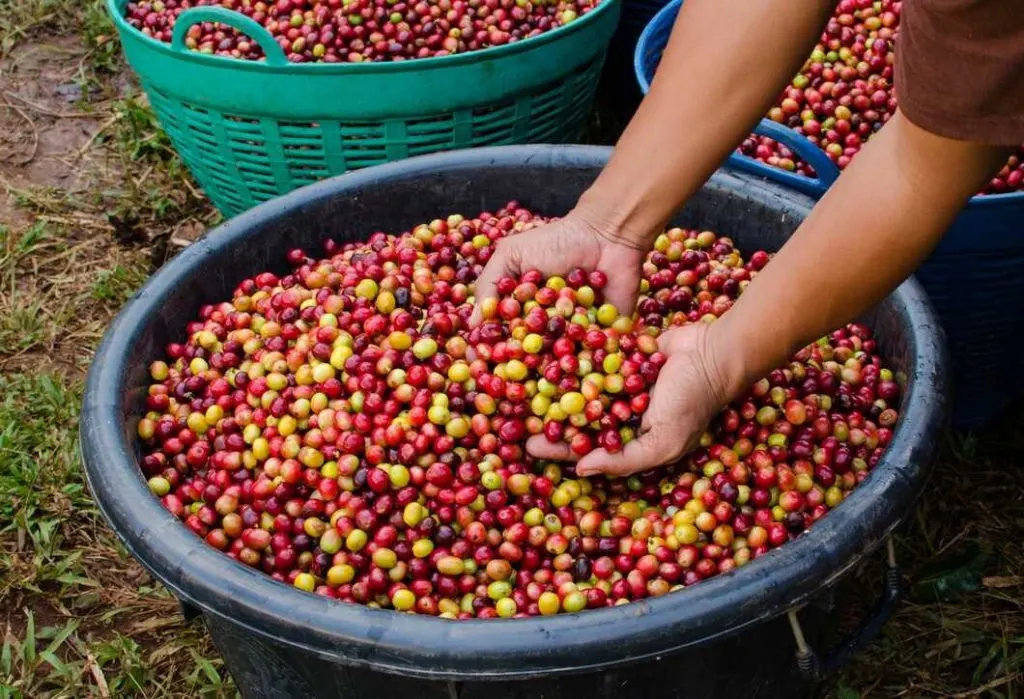
The cultivation of any crop is the essential part of the production. What is interesting about coffee beans when it comes to their initial cultivation is that they’re not actually beans at all.
“Coffee bean” is actually a misnomer for what they really are, which is seeds. These seeds are harvested from the pits of fruit that grows on the tall stalks of the coffee plant.
They are grown primarily in warm climates with a medium to high amount of humidity.
Arabica
Arabica plants are a tricky plant to cultivate. The plant itself (coffea arabica) takes around seven years to grow fully. The growing conditions for this plant are pretty specific.
For the best coffee, Arabica plants need to grow in altitudes of at least 1,500 m. This is why many coffee brands are named after mountains—Arabica naturally grows on hill and mountain sides.
The plant also needs moderate temperatures, as well as an even amount of rain. Coffea arabica produces small white flowers and bright red berries. In the center of these berries are the Arabica coffee beans.
Robusta
Robusta plants (coffea robusta) are the easier bean to cultivate out of these two. They are very robust under rough conditions, hence the name.
These plants can grow in almost any condition, as long as the temperatures are not too extreme for any growth. They are usually planted around sea-level but can flourish at almost any altitude.
They are naturally repellant to insects and are not very delicate when it comes to wind and rain. Robusta plants are easy to care for, and therefore are usually cheaper than Arabica plants.
Growing Regions
As stated before, coffee plants need plenty of warmth and moisture to be cultivated. This means that they are usually found in regions with sub-tropical climates.
Coffee plants can be found on almost every continent, though they are most frequently found in South America, Asia, and Africa.
Arabica
Arabica beans were originally found in Ethiopia. However, now they are grown in various countries across the world.
Brazil is currently the country that produces the largest amount of Arabica beans. The country produces around five billion Arabica plants per year, which makes up almost half of the total number of plants.
Arabica beans are most often cultivated in South American countries, like Panama, Mexico, and Guatemala. One of the most popular places to get Arabica coffee is from the Jamaican Blue Mountains as well.
Robusta
Robusta beans are grown in fewer countries than Arabica, due to their lack of demand. They are primarily grown in Vietnam, as well as parts of India and Africa. For the most part, the production of Robusta beans stays within Asian and African countries.
Resiliency
The amount of resilience that any plant has is going to determine its lifespan. Resiliency is a form of evolutionary fitness, which makes cultivating and harvesting it much less difficult.
Unfortunately, plants that are naturally resilient usually aren’t the most coveted. Plants that are rarer and more difficult to cultivate are quite regularly regarded as more interesting and, therefore, more profitable. It’s clear that this is partially the case when it comes to coffee.
Arabica
As stated before, the Arabica coffee plant has very specific needs when it comes to cultivation.
While these plants can be grown at lower altitudes and in lower quality soils, they are not going to be great beans. Therefore, they are not going to make great coffee.
Arabica coffee plants are also very sensitive too heat and cold, leaving them with very little options for places to cultivate.
Similarly, they are sensitive to the amount of water that they are getting, so they require sub-tropical conditions.
On top of all of this, Arabica beans are also not incredibly resistant to insects in the wild either. Though many coffee brands taut that they are “pesticide free”, this isn’t the case for all Arabica coffees due to their vulnerability.
Robusta
Robusta plants are incredibly resilient. They do not need even close to as specific of conditions to grow as Arabica plants.
These plants grow well in basically any sub-tropical climate and overall yield a significant amount more than Arabica plants.
A large amount of CGA and caffeine in Robusta plants assists in deterring pests, which is a huge part of their great resiliency.
Shape
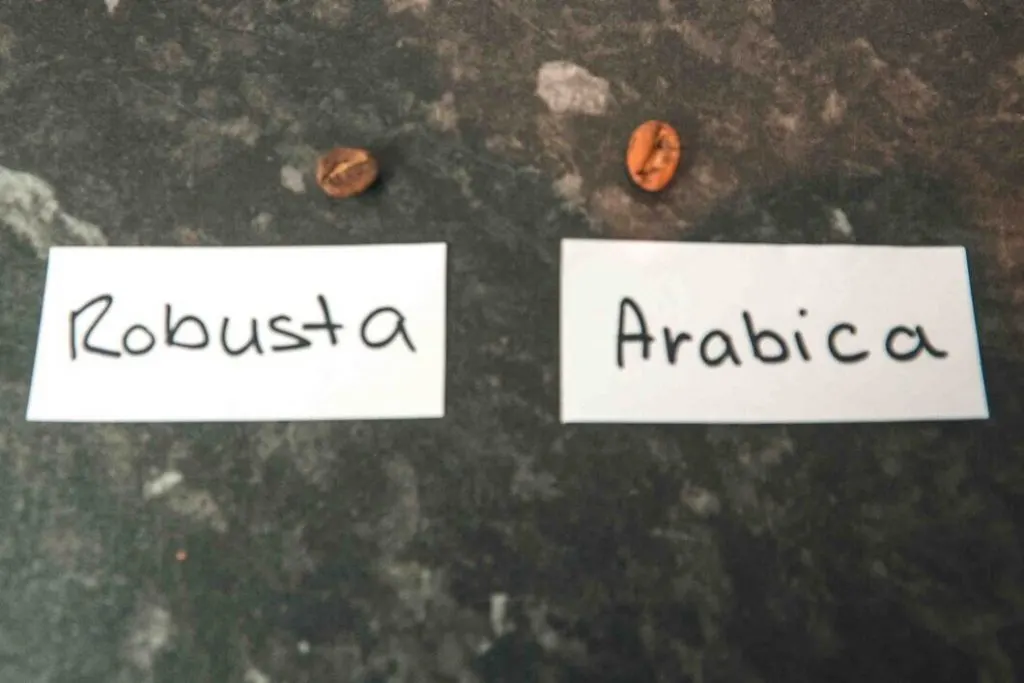
The shape of the coffee bean doesn’t really have anything do to with flavour or overall quality of the bean.
It is good to have an idea of what each of these beans looks like for reference, though, so let’s go over the size and shape of these different types of coffee bean.
Arabica
The Arabica bean is probably the image in your head when you think of a coffee bean. It is darker in colour and very often has a sheen from the oils it produces.
These beans have the classic long, oval shape with a deep crease in the middle of the bean.
Robusta
Robusta beans are basically the opposite of the average Arabica bean. These beans are quite often shorter, rounder, and lighter than Arabica beans.
These beans usually have a much shallower crease than that of the Arabica bean, sometimes being almost entirely spherical.
Though, some Arabica beans can share this shape, so identifying Robusta beans can be trickier than you would imagine.
Lipids & Sugars
When it comes to basically anything consumable, the more lipids and sugars that are involved, the tastier it will be.
In case you forgot everything you ever learned in a Biology class; lipids are molecules that primarily makeup fats. So, these lipids are going to make the texture of the coffee creamer and more viscous. The less lipids, the more liquidous the coffee will be.
The sugar content of coffee is going to add to the flavour and scent of the coffee. A significant enough amount of sugar can entirely combat the bitterness of the caffeine, giving the coffee a smooth and balanced taste.
Arabica
That good taste has to come from somewhere! Arabica beans are full of lipids and sugars.
On average, Arabica beans actually have almost two times more sugars than Robusta beans. The sugars in these beans contribute to the taste as well as the smell of the coffee.
As far as lipids are concerned, around 16% of each bean is made of them. In coffee, lipids assist in making a brew have a fuller body and can help with the taste as well. These lipids are why coffee can sometimes have a buttery taste and feel.
Robusta
From what we discussed about the taste of Robusta beans, you could probably guess that they don’t have a very high lipid or sugar content.
Robusta beans are definitely not as full of sugar as Arabic beans, and with their high caffeine content, this usually results in their often-bitter taste.
These beans do, however, still have a pretty solid lipid count. This is why if Robusta espresso is done correctly, it can yield a really beautiful crema.
Pollination
Because discussing the intricacies of pollination probably isn’t what you were looking for when you came to this article, we’re just going to stick to the basics of what pollination does for a plant.
Pollination is important for the reproduction of plants. If a plant can self-pollinate, it is more likely to thrive in an environment on its own and much less likely to develop mutations. This is a key factor of one of these beans’ success.
Arabica
The Arabica coffee plant is actually self-pollinating. This definitely gives Arabica a few benefits when cultivating. Producers of Arabica don’t have to worry about the pollination process with this plant, which makes the process simpler and less of a hassle.
The Arabica’s self-pollination also promises much fewer genetic mutations and variations, as stated previously. This results in a quality bean almost every time, guaranteed.
Robusta
Pollination might actually be the downfall of the Robusta plant as far as cultivation is concerned. While Arabica is self-pollinating, Robusta is very much not.
This leaves Robusta beans open to a lot of possible genetic defects and variations as time goes on, which can impact the overall quality of the bean. This might be a reason for the Robusta bean’s overall negative reception by coffee aficionados.
Chromosomes
When it comes to anything, the number of chromosomes normally found in a certain organism isn’t going to affect much about it.
We’re just going over this fact because it’s an interesting thing to look at, NOT because it says anything about the quality of the beans.
Arabica
Arabica beans are actually totally unique here! They are the only beans in the coffee family to have 44 chromosomes.
Robusta
Robusta beans have 22 chromosomes, which is the same amount as almost every other coffee bean. A lot of true beans have 22 chromosomes, like kidney beans.
Though this fact doesn’t really mean anything when it comes to taste, texture, or complexity, it’s still an interesting fact that not many people are going to know.
Is One Better Than the Other?
Most coffee drinkers would agree (including myself) that Arabica beans are, just simply, the superior of the two.
Not only do they have a better flavour and texture, but they are usually going to give you a higher quality cup overall. The same can’t be said for Robusta beans.
However, it’s not entirely fair to rule out the merit of Robusta-based drinks entirely. Robusta beans may have a harsh taste, but they can be critical to the strength of a morning shot of espresso.
If you are a fan of Robusta beans, it isn’t a fault. Coffee is, of course, meant to be enjoyed. And when it comes down to it, preference is key. No matter what anyone says, coffee should be chosen based on personal preference. `
